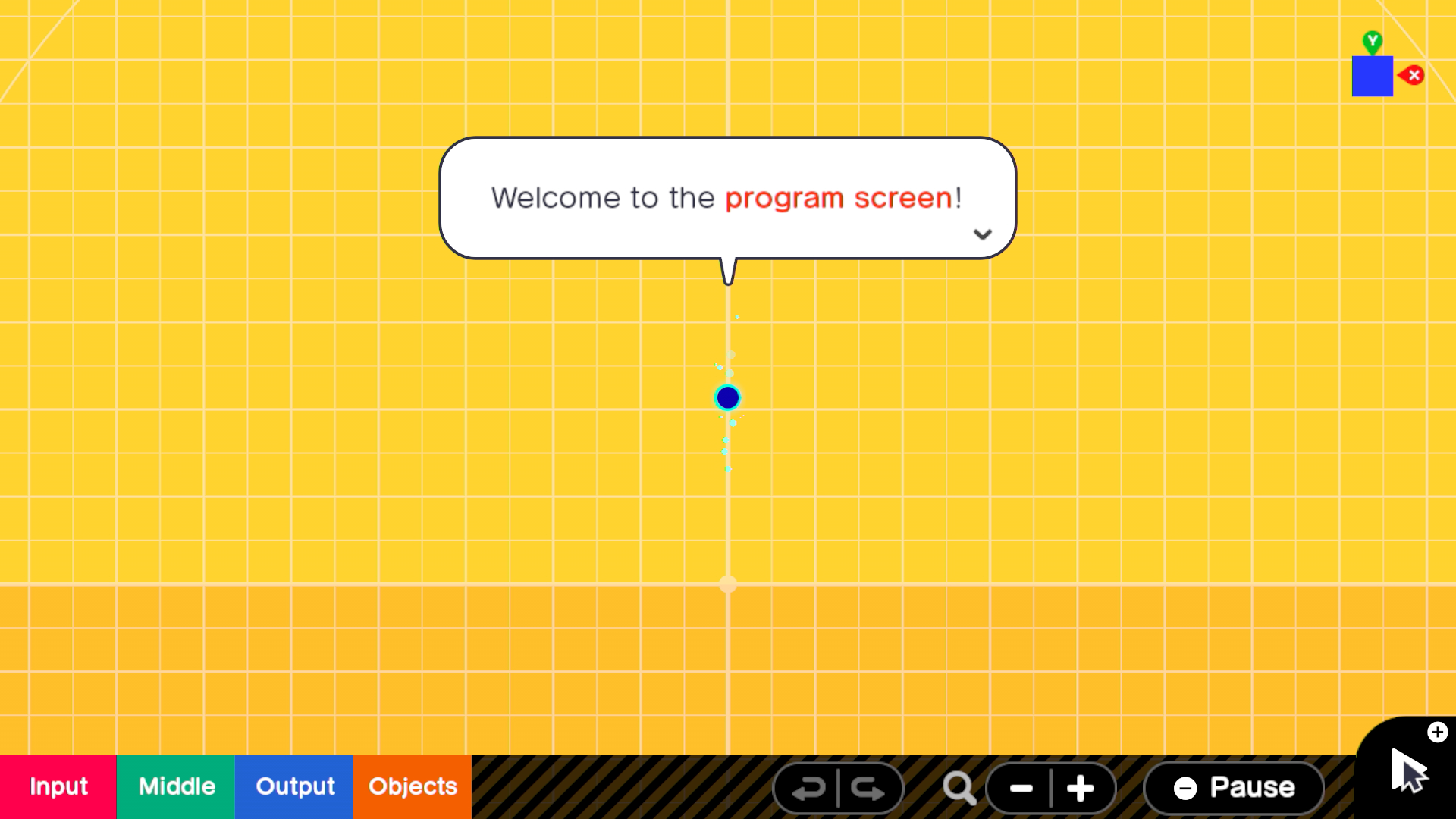 Welcome to a blank, empty world that you get to fill.
Welcome to a blank, empty world that you get to fill.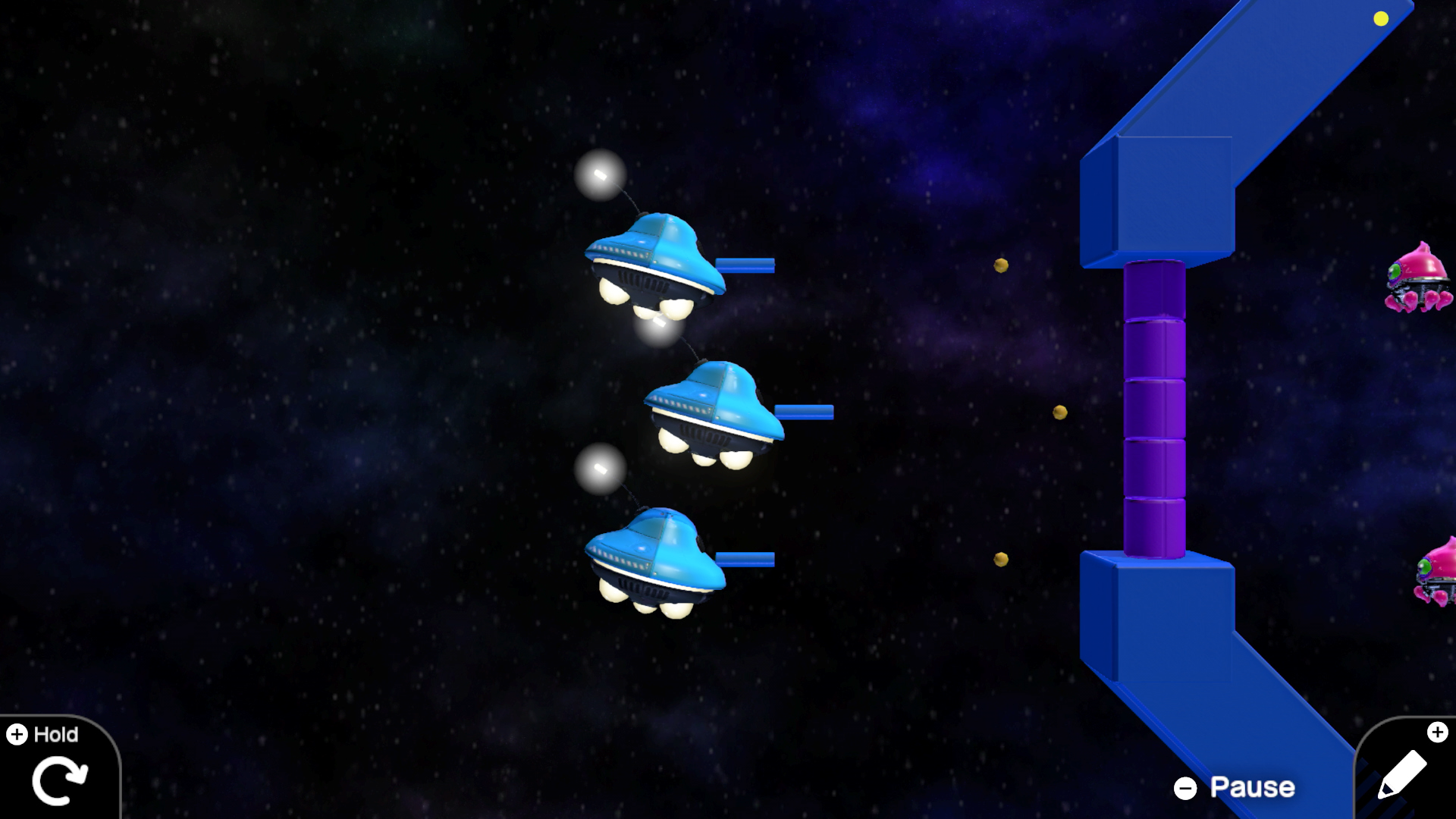 These UFOs are each made from a collection of a few Nodons.
These UFOs are each made from a collection of a few Nodons.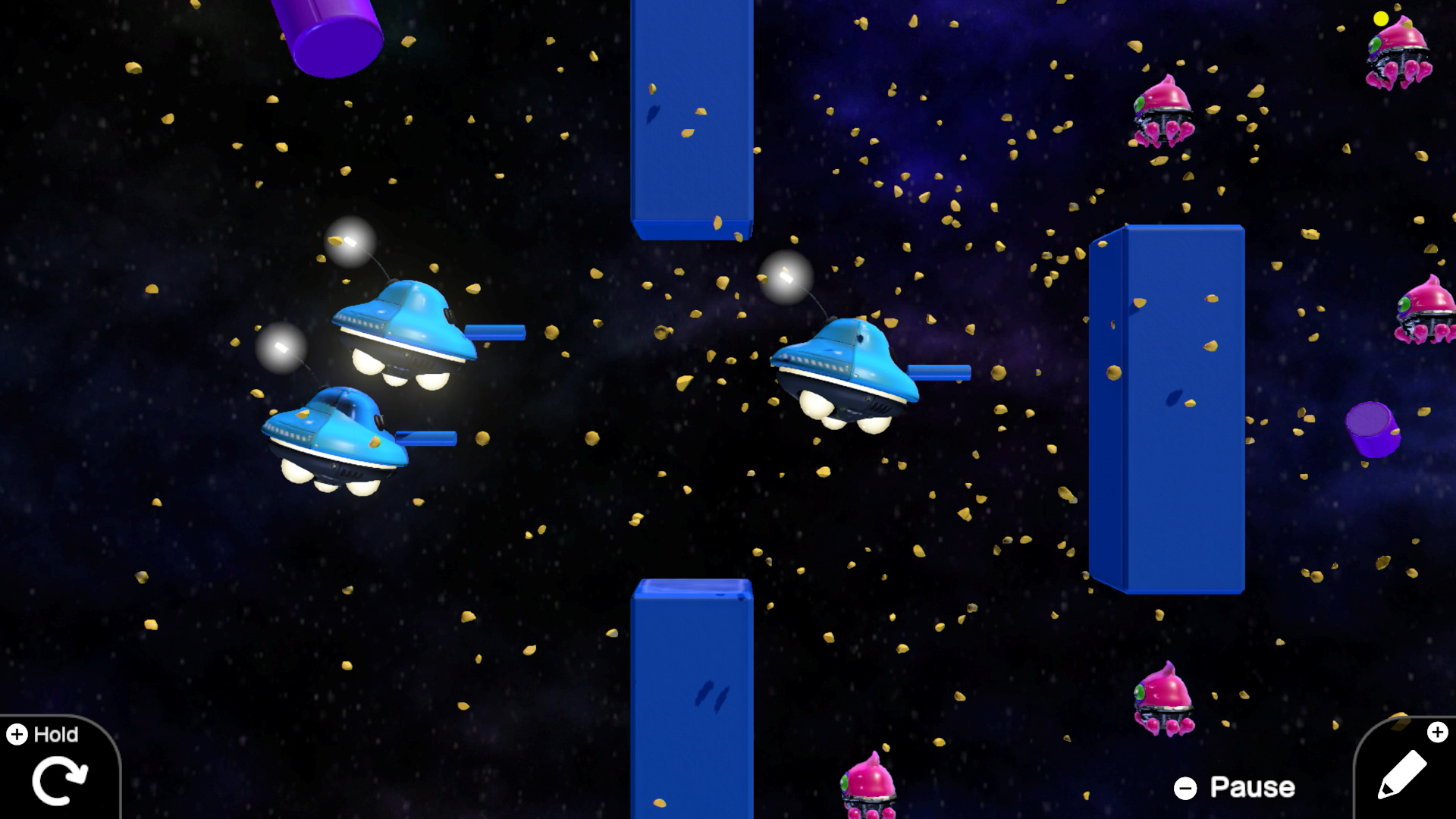 Particle effects!
Particle effects!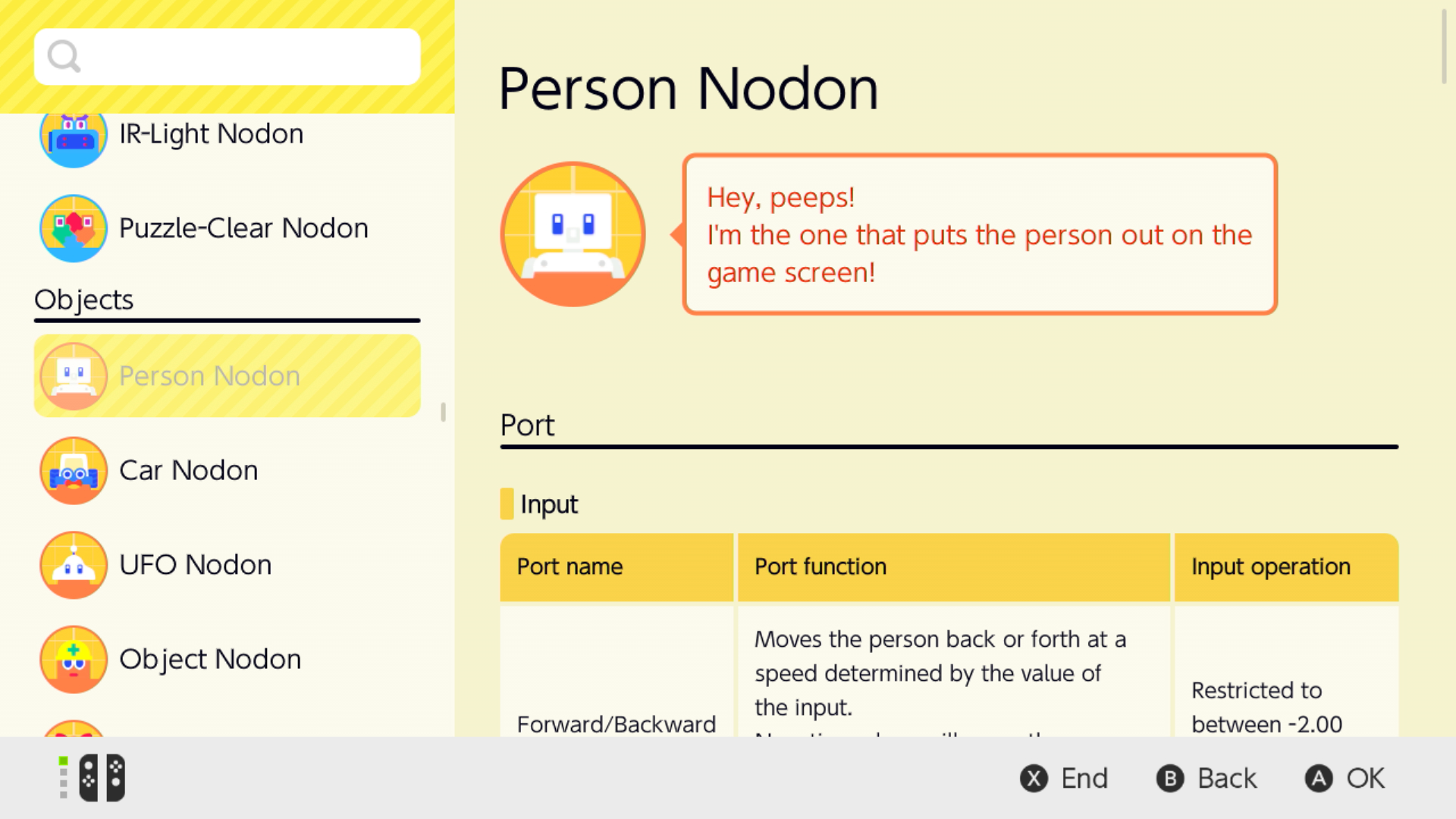 Hey, peeps!
Hey, peeps!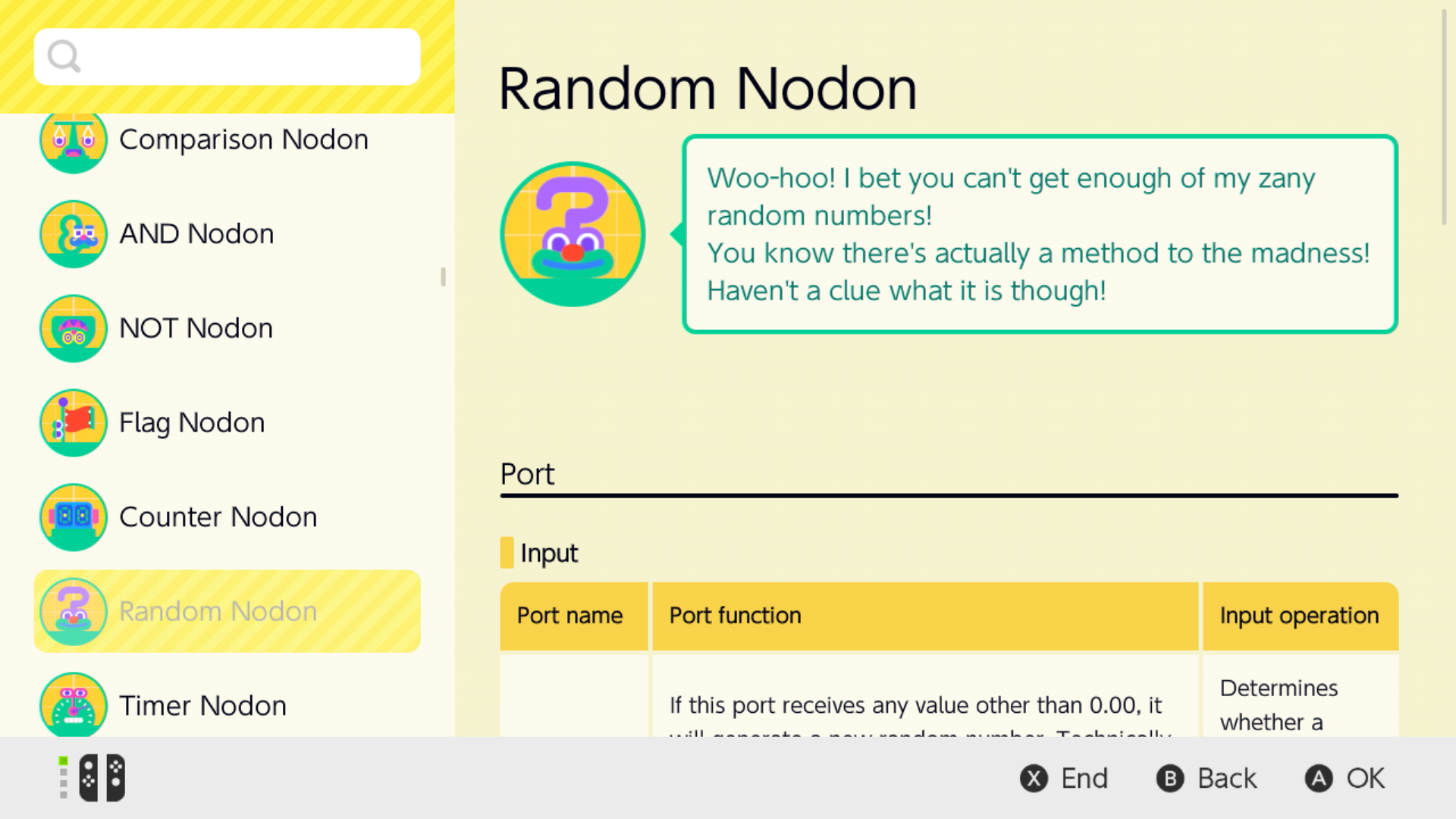 How zany and random!
How zany and random!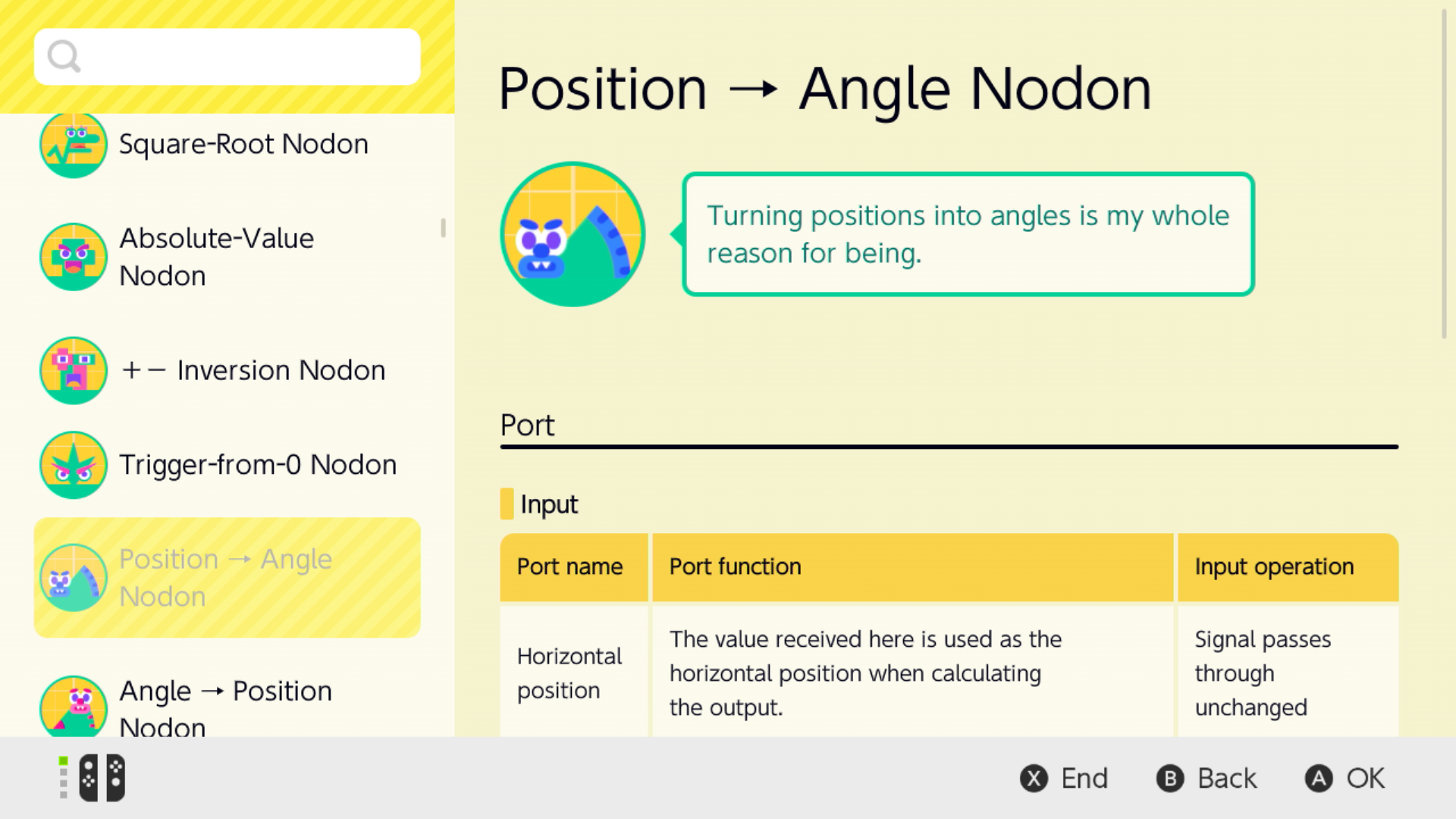 Man, that must be a bleak existence.
Man, that must be a bleak existence.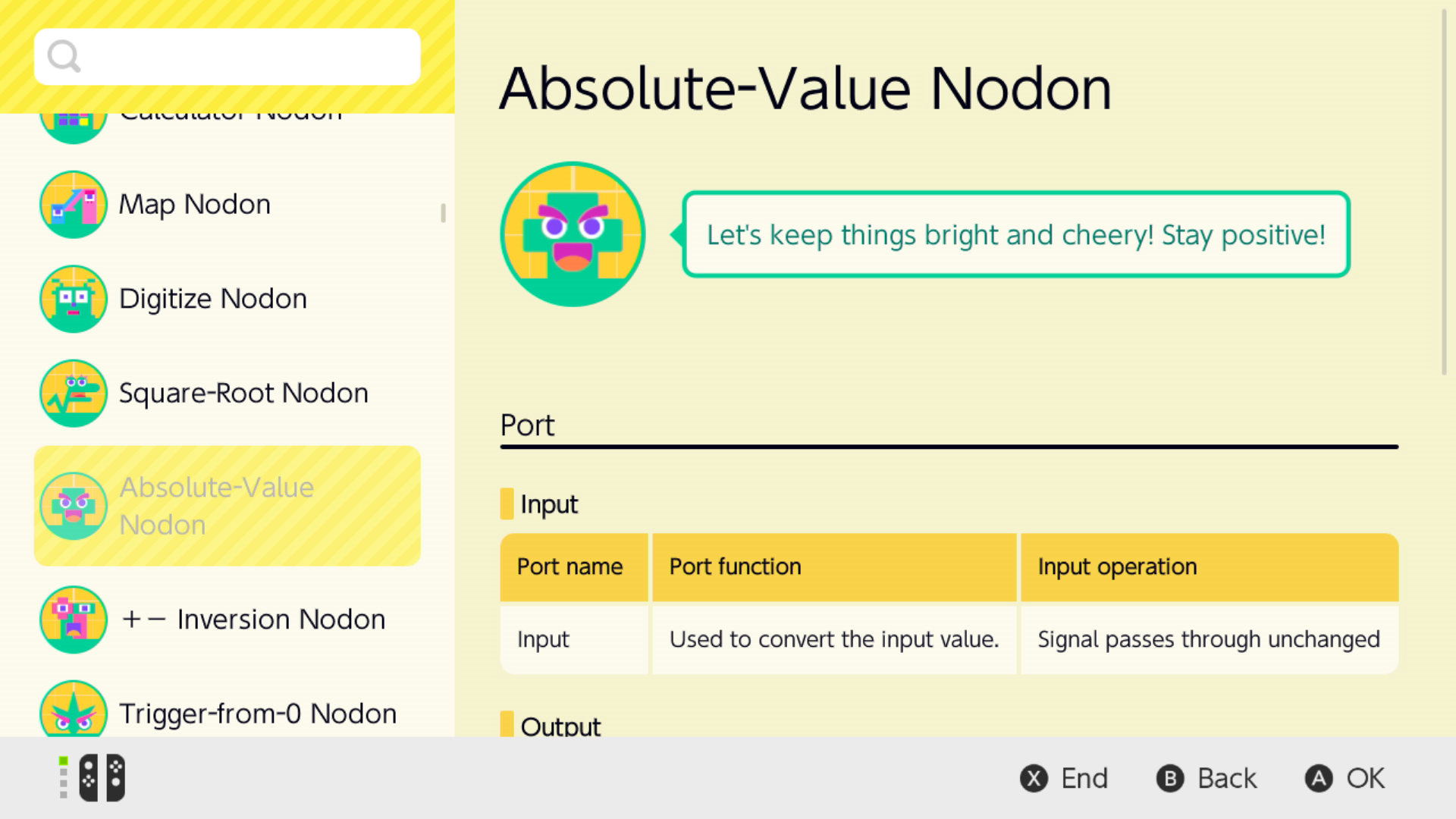 You have to accentuate the positive.
You have to accentuate the positive.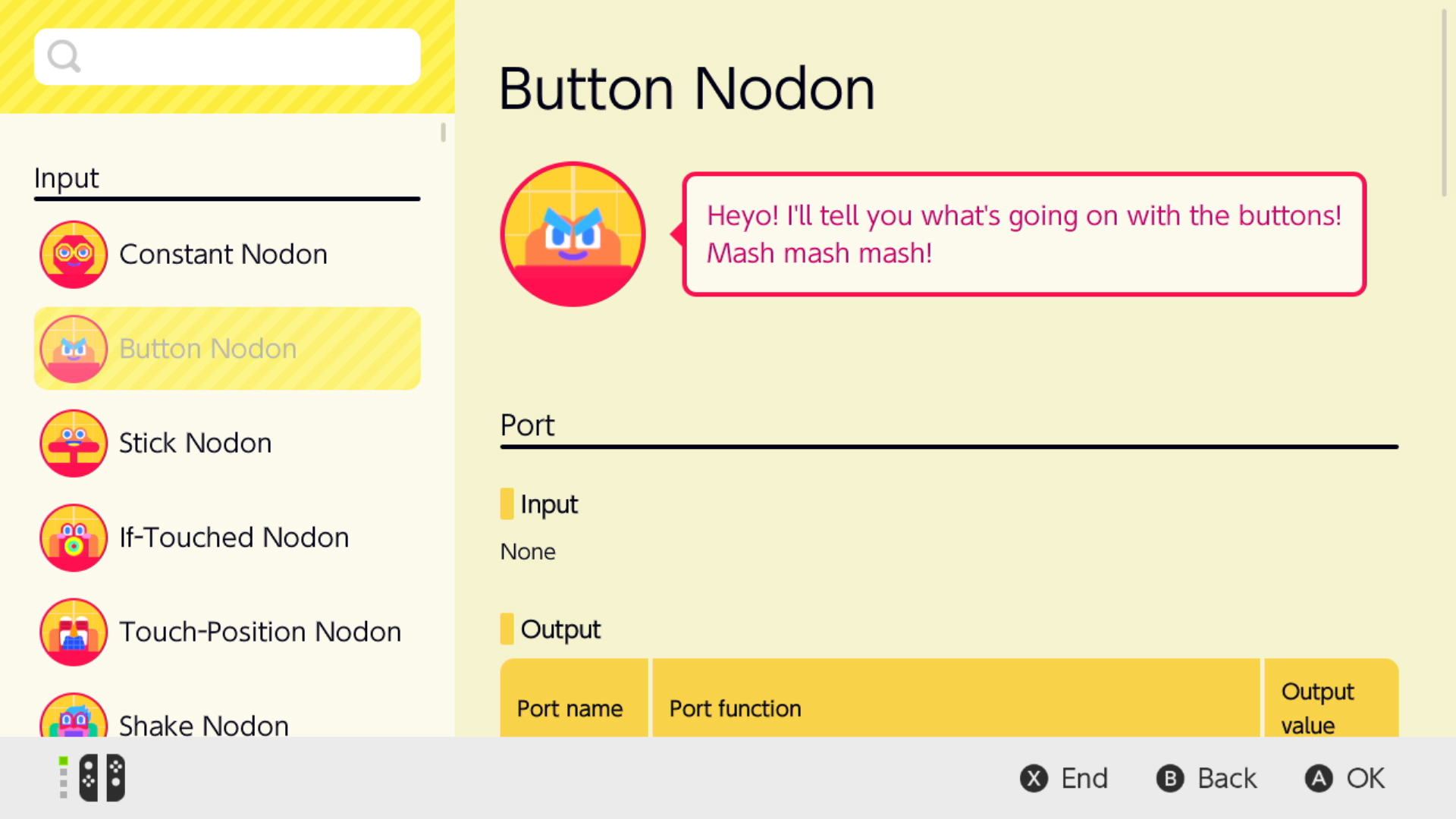 They did the mash...
They did the mash...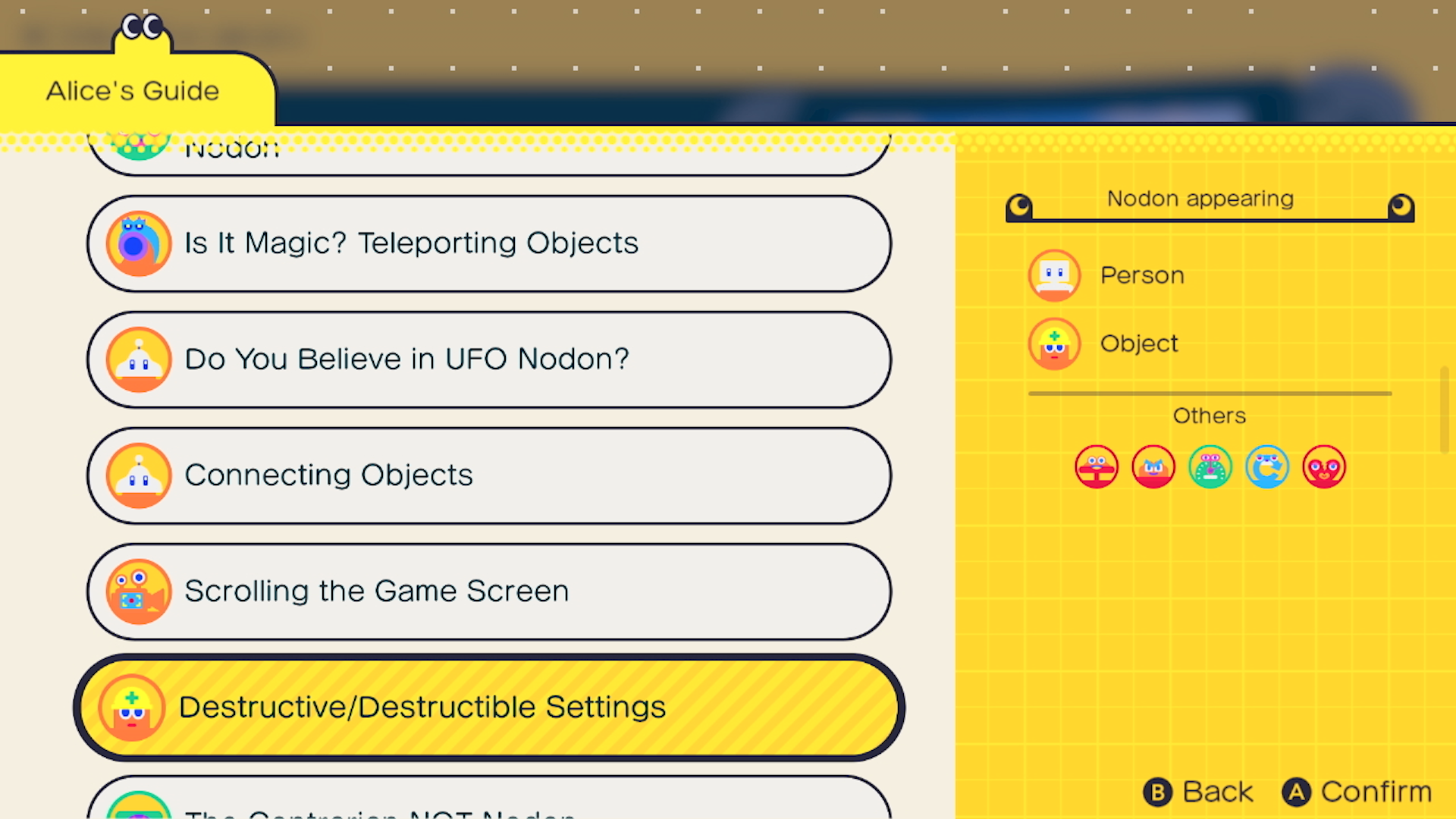 The guides will take you through each individual game element step by painstaking step.
The guides will take you through each individual game element step by painstaking step.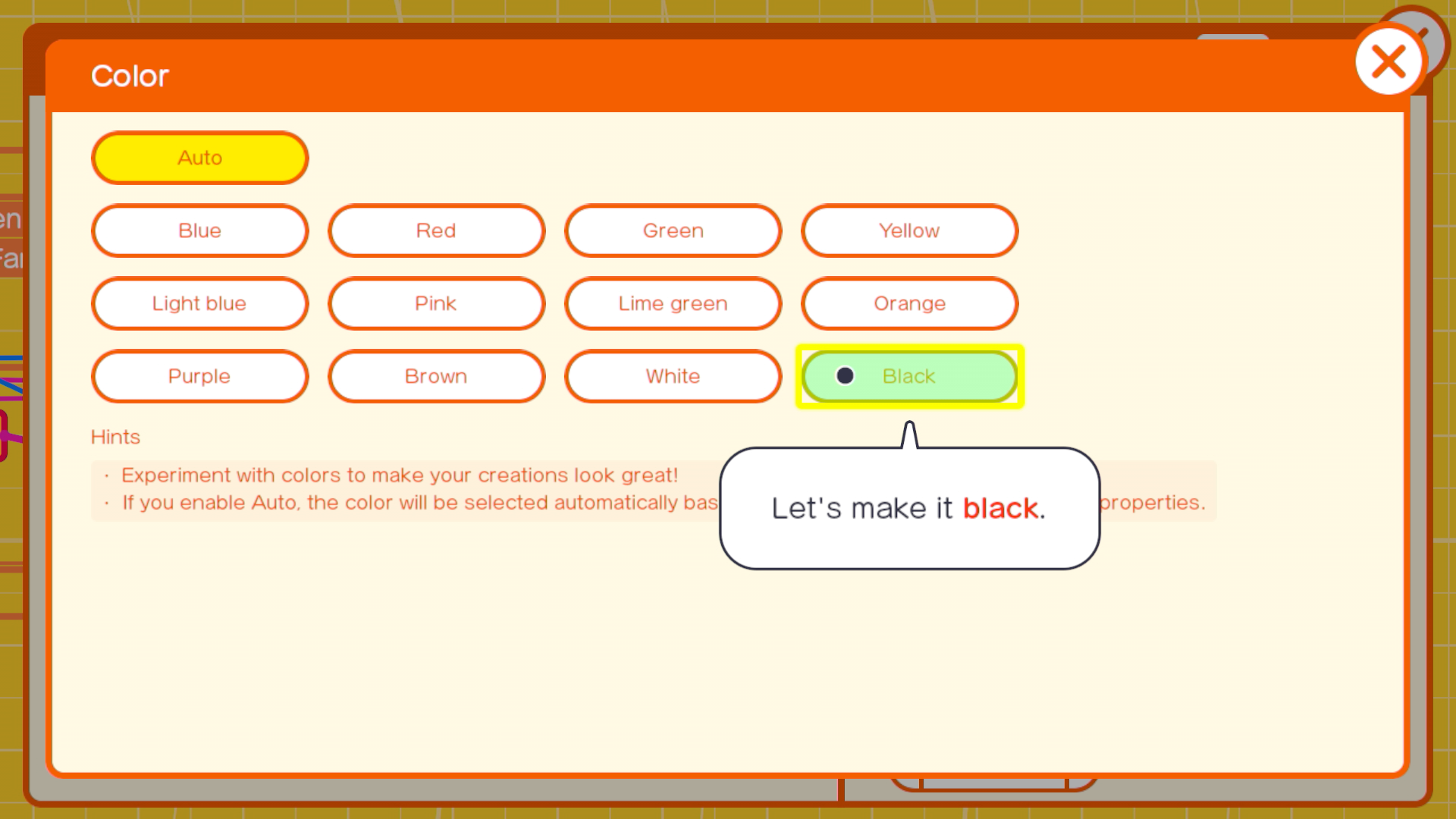 I see a red door, and I want it painted black.
I see a red door, and I want it painted black.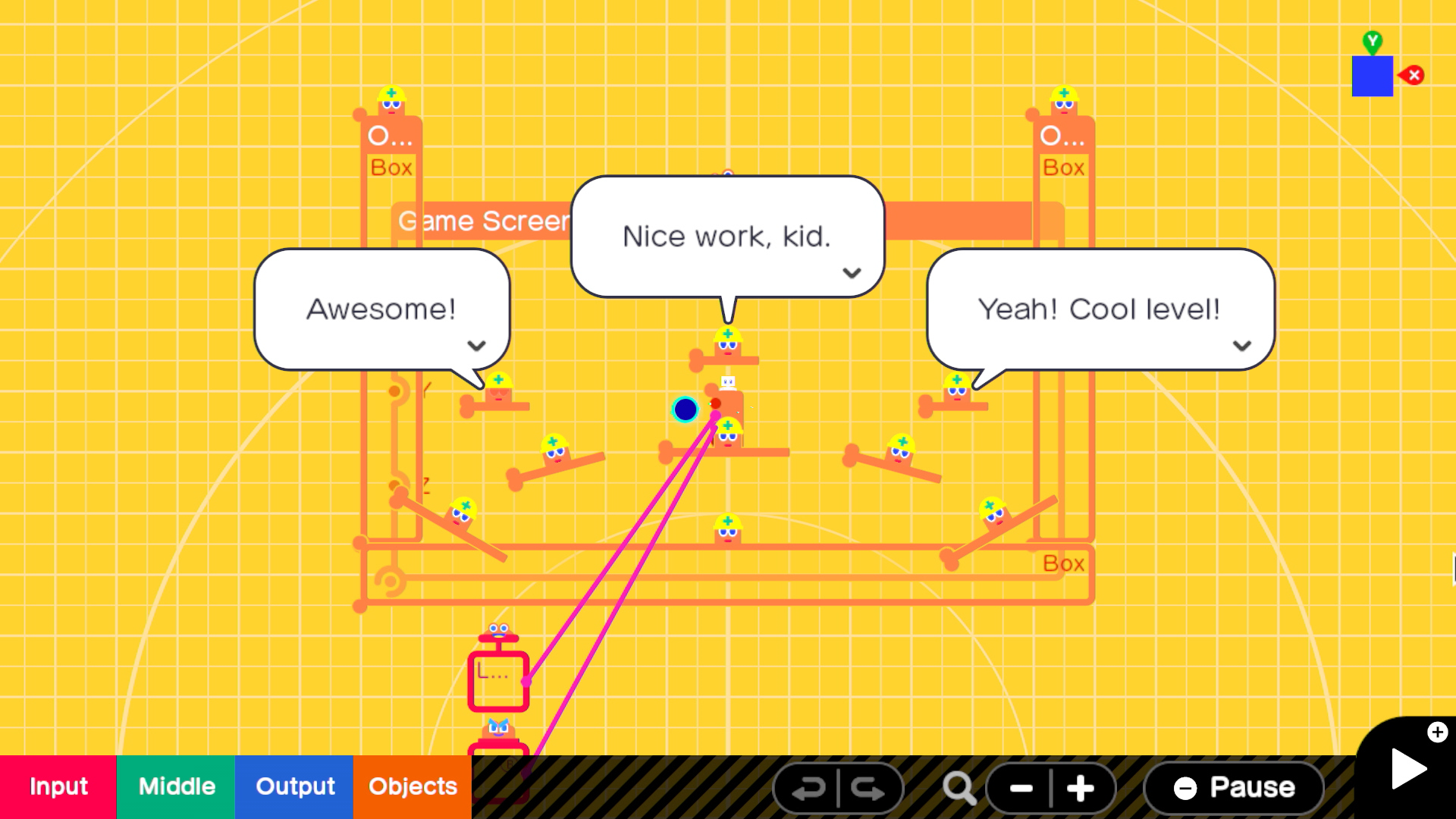 Has your Python code ever come to life to congratulate you? Well, has it?
Has your Python code ever come to life to congratulate you? Well, has it?
Nintendo isn't new to this concept, either—the Mario Maker series and games like WarioWare DIY have given players robust creation tools to play with. But Game Builder Garage is Nintendo's most ambitious effort yet to let its users make games, using a coding-free environment built for the Nintendo Switch.
Meet the Nodons
The basic layout of Game Builder Garage will be familiar to anyone who has used visual programming tools Scratch or the Unreal Engine's Kismet environment. Instead of being built with lines of code, Garage games are made by placing and connecting little colored square beings called Nodons, which sit in the design space and distractingly blink their eyes at you every few seconds.
Every single thing in a Game Builder Garage game is represented by a Nodon, from the playfield/game screen to the player-character, the enemies, and invisible concepts like constants and variables. And everything about the game itself can be controlled by selecting a Nodon and tinkering with its inputs, outputs, and configuration—no actual lines of computer code are necessary.
To create an auto-scrolling 2D level, for instance, you can create a counter Nodon and connect it to the "X" coordinate of the "screen" Nodon, making the camera position shift to the right over time. If that configuration makes the screen move too fast, a "map" Nodon in the connection chain can set a limit on how quickly the counter counts up.
Physical-object Nodons, meanwhile, can be created using pre-made parts (a soccer ball, balloons, a can of tuna) or can be built from individual components (a few flattened spheres and boxes connected to make a tank, for instance). You can play with the physical and visual properties of each one, too, from size and shape to specific gravity and weight.
Other Nodons can control everything from counting up the score (with another Nodon to display it) to cycling random variables that control a cannon's rate of fire. You can also set up Nodons to trigger what happens when you press a specific button on the Joy-Con (or even using motion controls). An invisible Nodon can act as a trigger zone, activating other effects when a character crosses an on-screen threshold. Join them all together and the possibilities are almost endless.
Game Builder Garage will walk players through these options slowly via a series of seven guided tutorials. A bouncing blue dot named Bob leads players through each step to allow you to make games like a 2D tag simulation, a racing game with AI opponents, or a 3D adventure game.
"Regardless of whether you’ve made video games or not, it doesn’t matter," a Nintendo representative told us during a guided, hands-off demonstration, adding that middle school-age children (and up) are the target audience. "You’ll follow Bob and you will have seven working video games at the end of it."
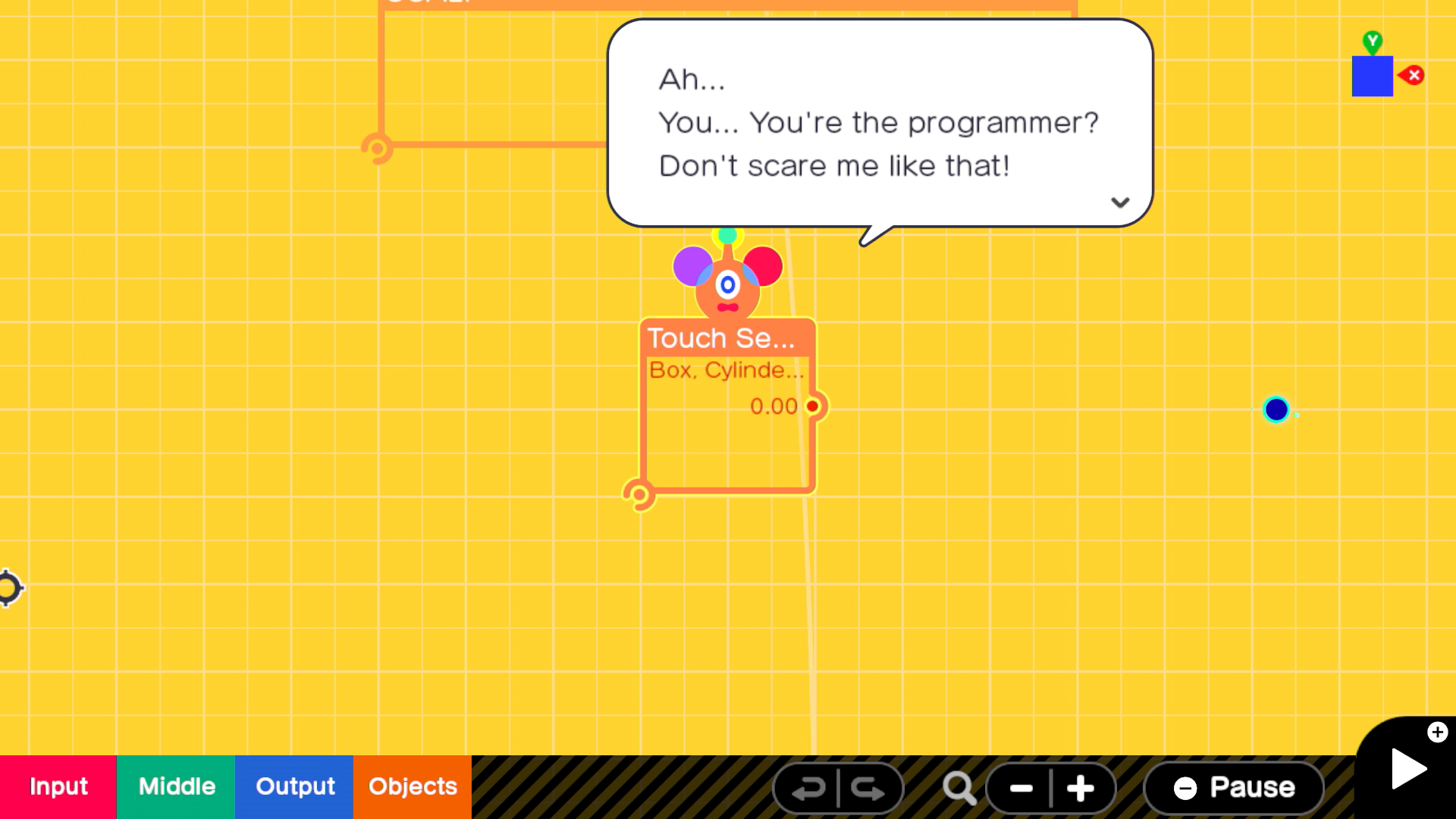 I'm not sure I'm ready for my programming objects to be scared of me.
I'm not sure I'm ready for my programming objects to be scared of me.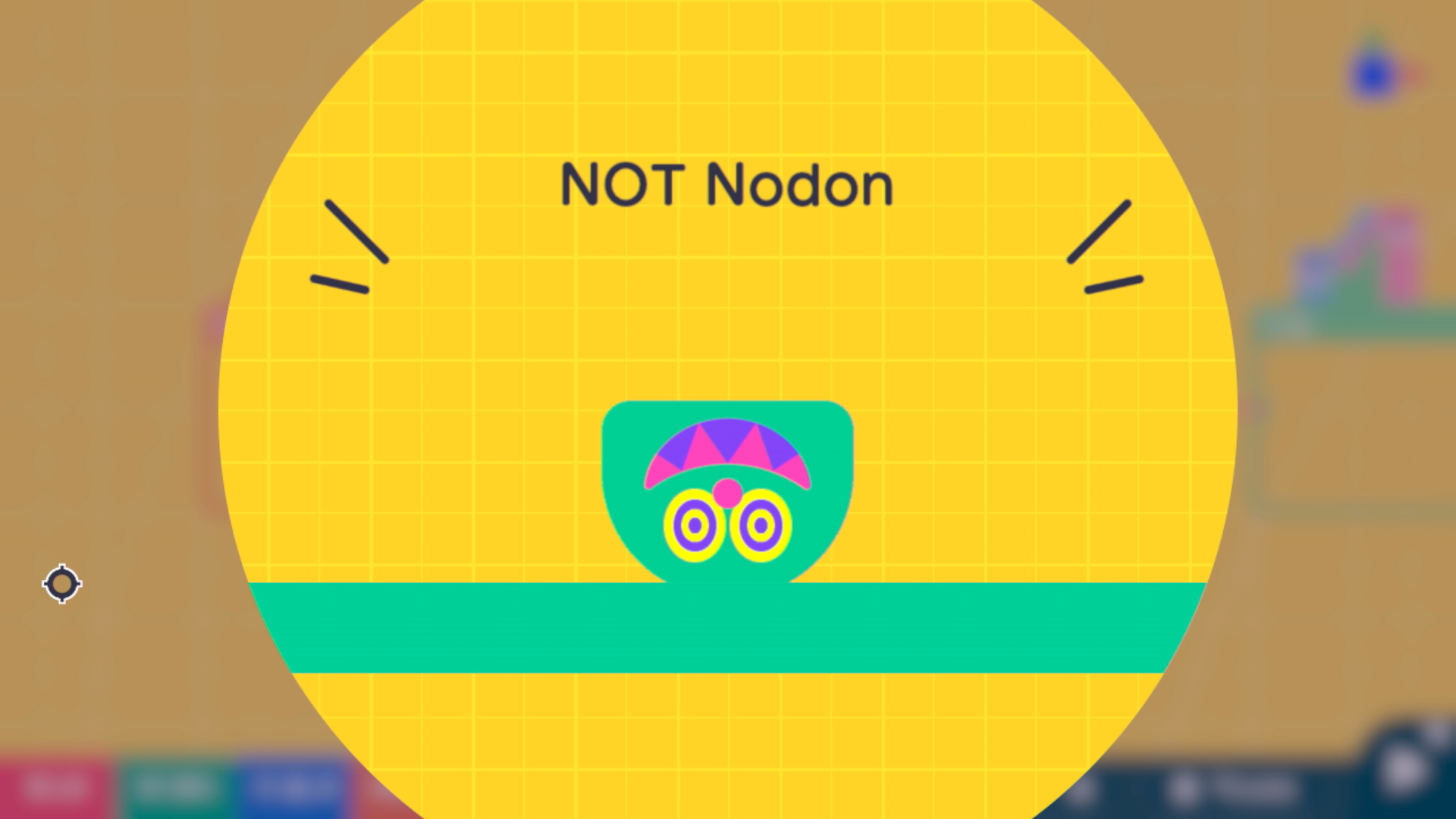 Despite its name, the NOT Nodon is actually a Nodon.
Despite its name, the NOT Nodon is actually a Nodon.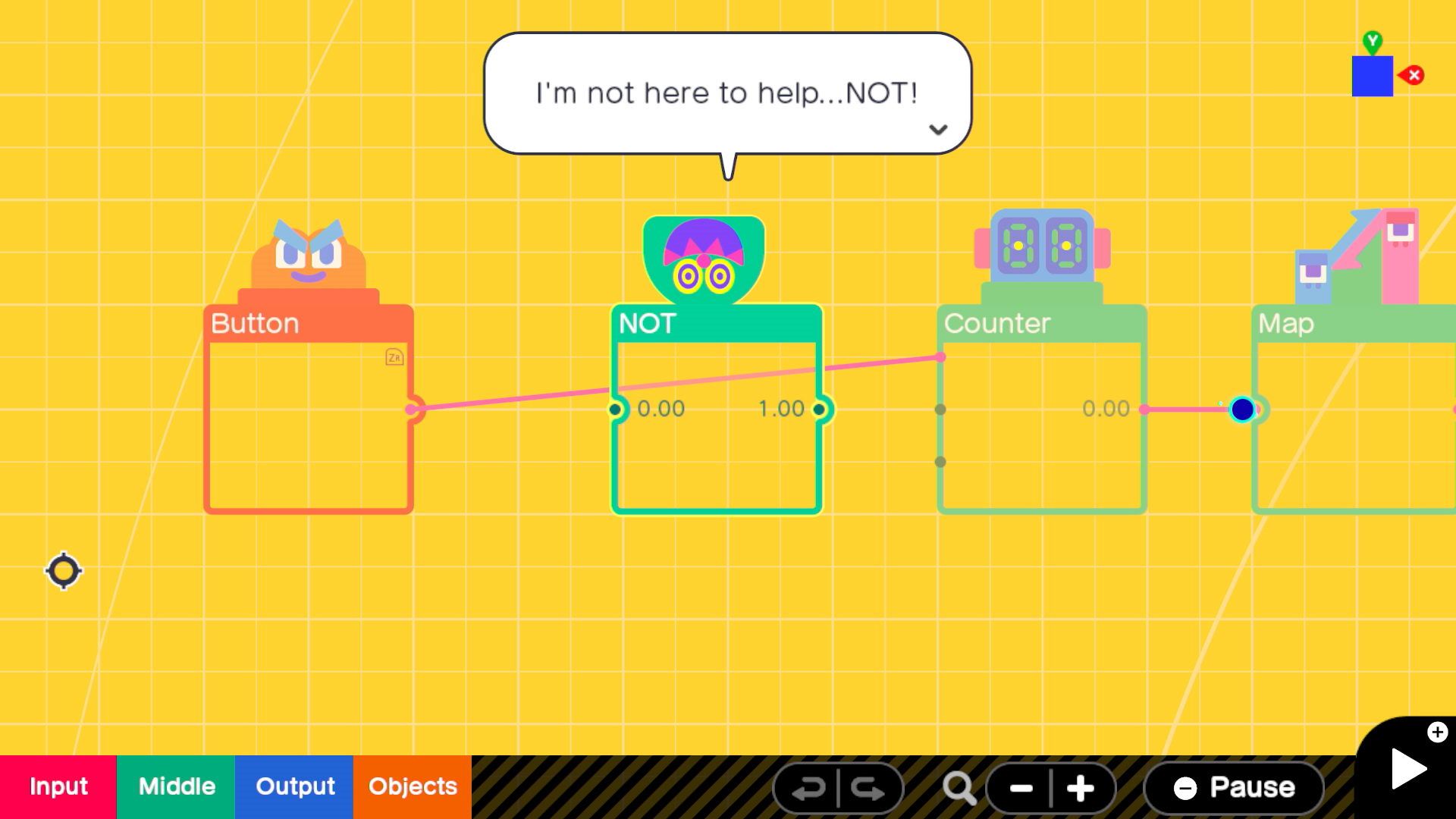 The best of '90s humor... today!
The best of '90s humor... today!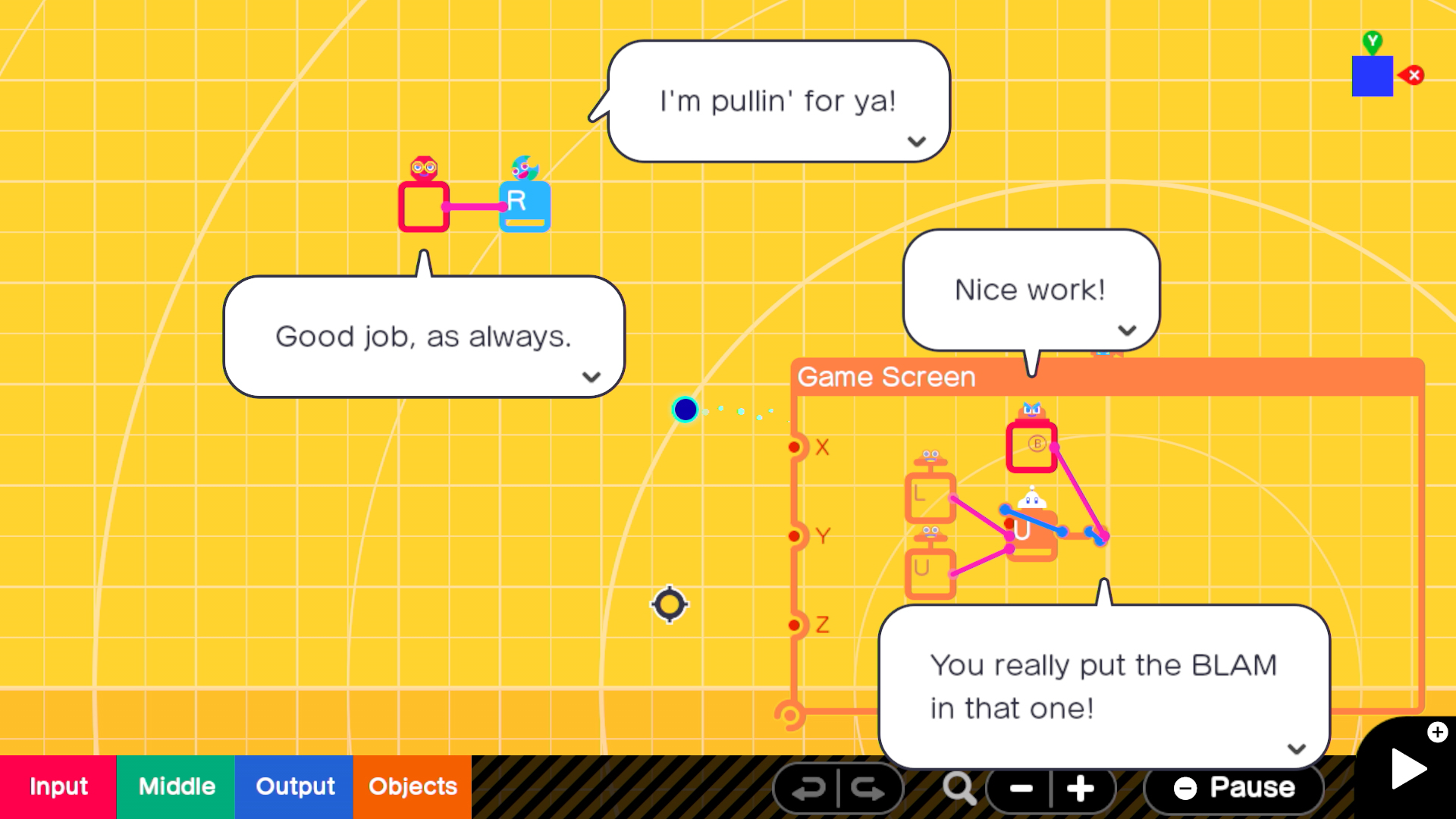 BLAM!
BLAM!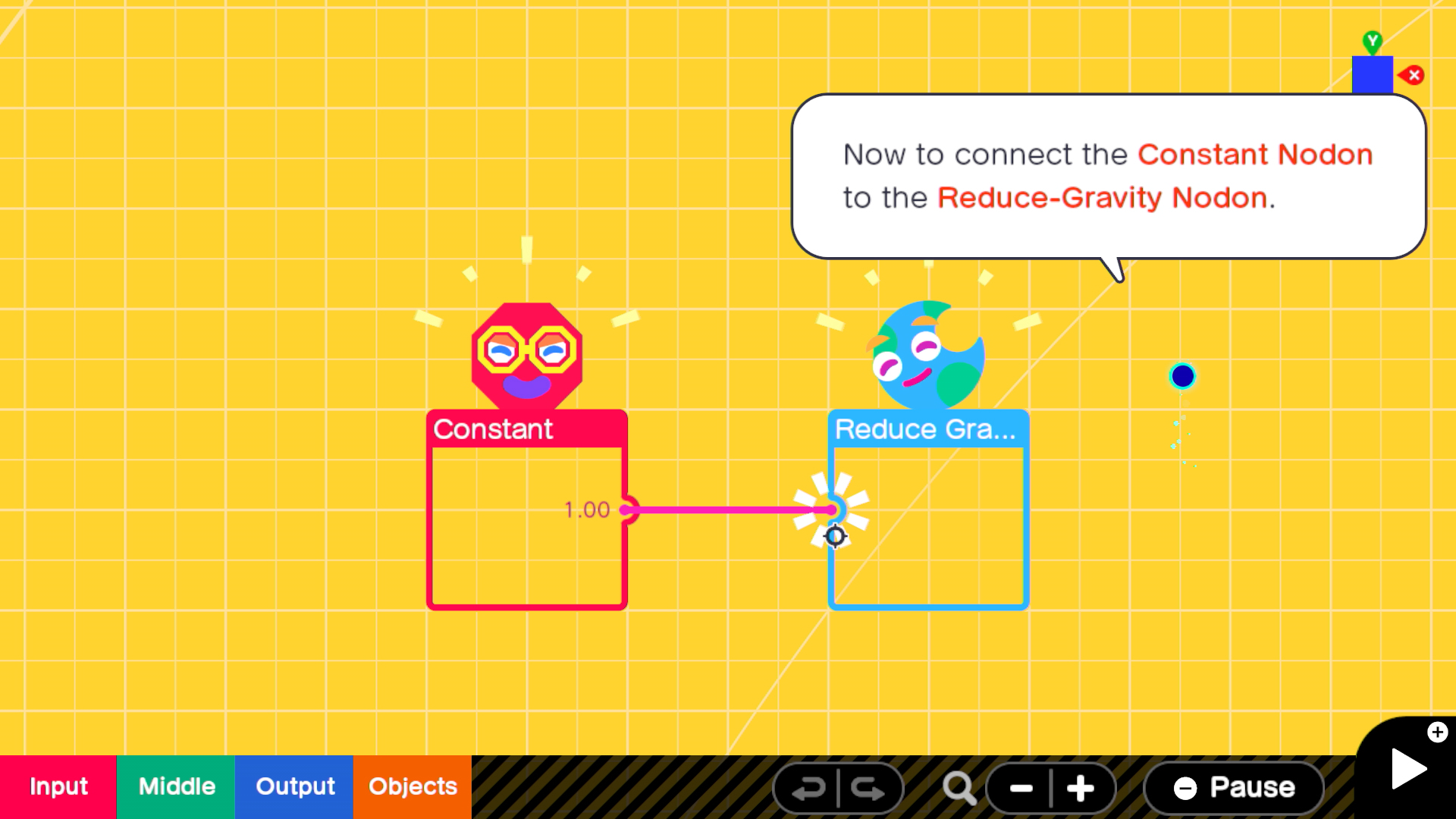 Naughty.
Naughty.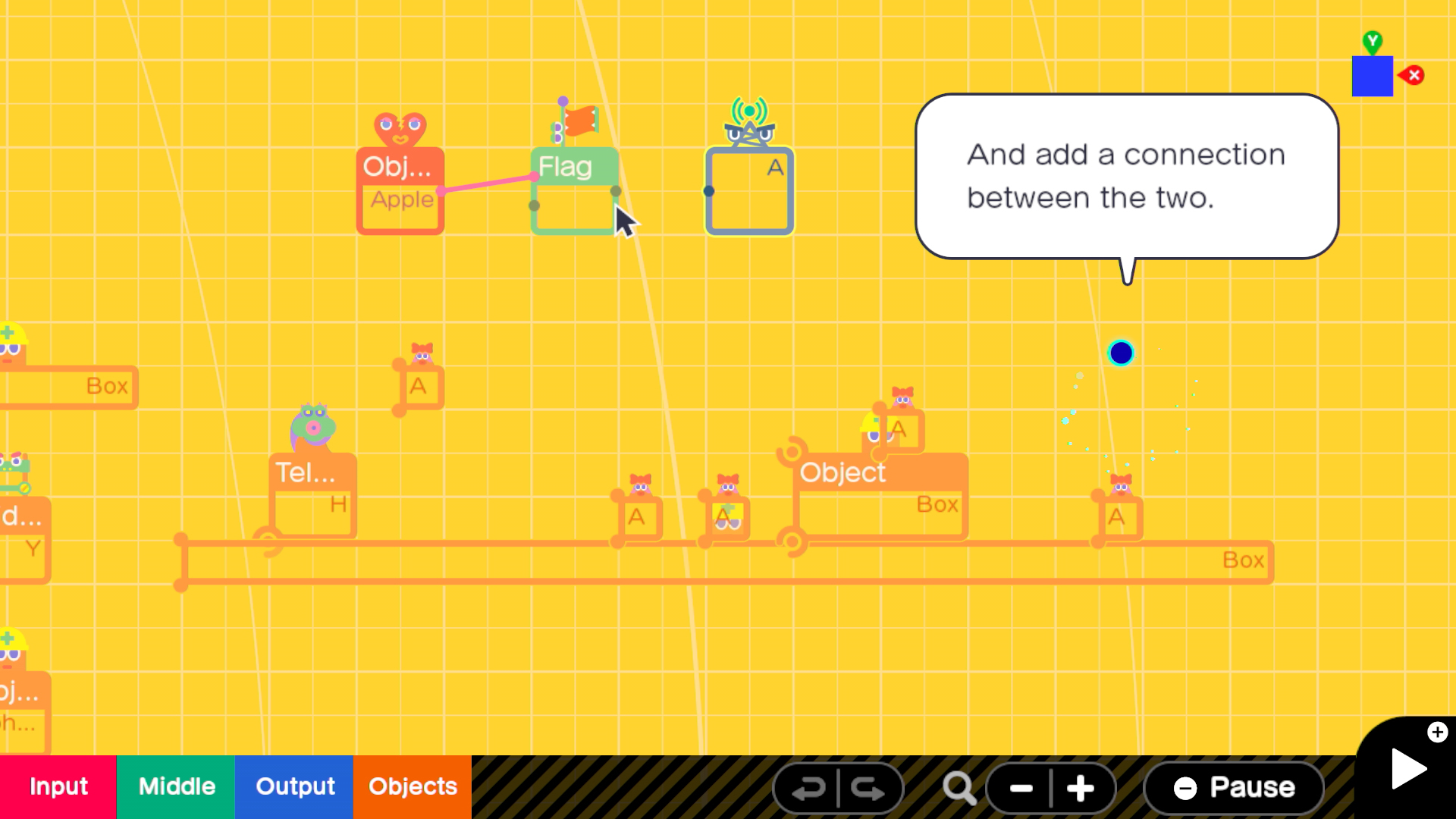 Bob tells you what to do.
Bob tells you what to do.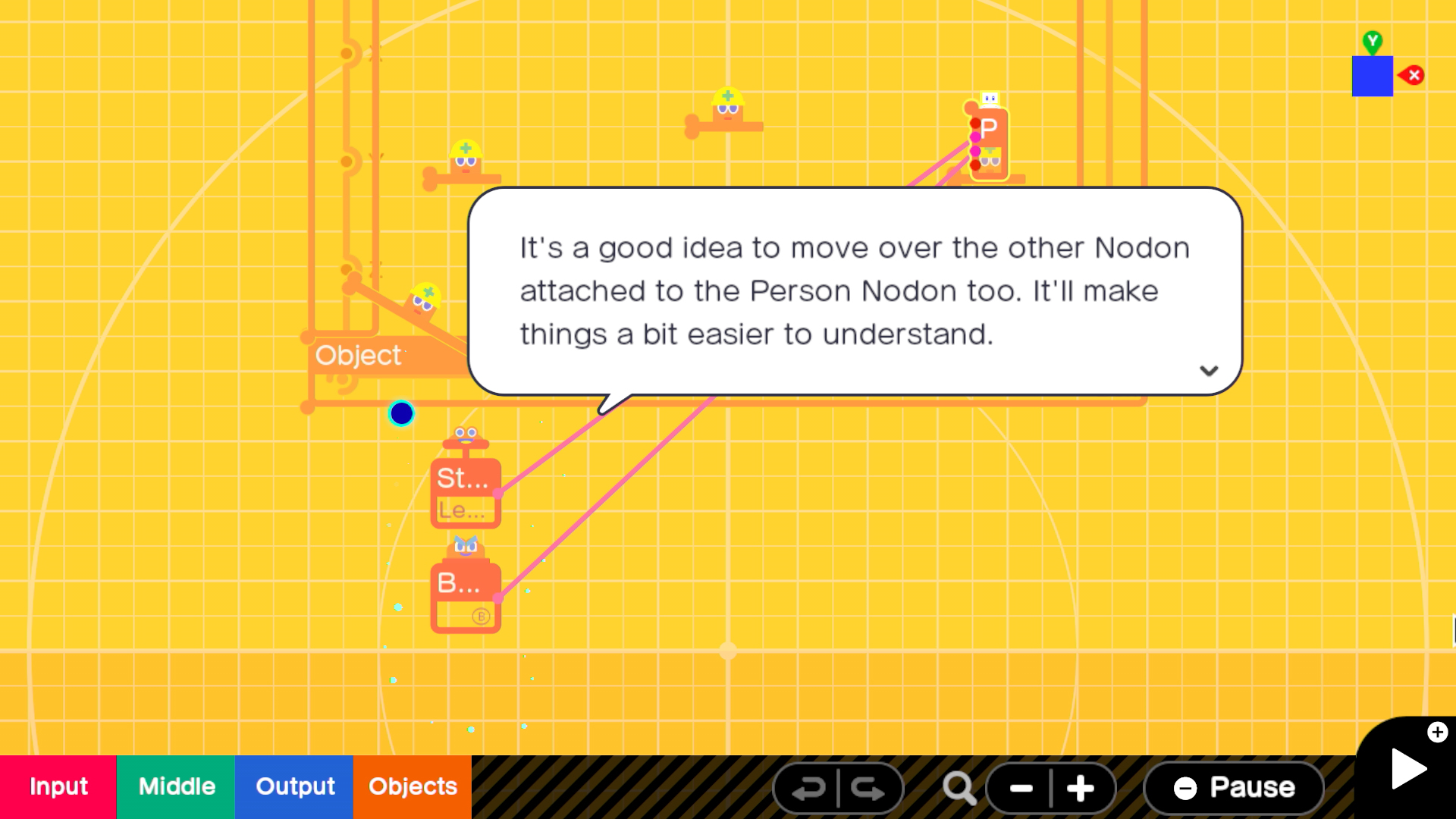 Arranging your Nodons in a cohesive way around the building space is gonna take a lot of effort, I'd imagine.
Arranging your Nodons in a cohesive way around the building space is gonna take a lot of effort, I'd imagine.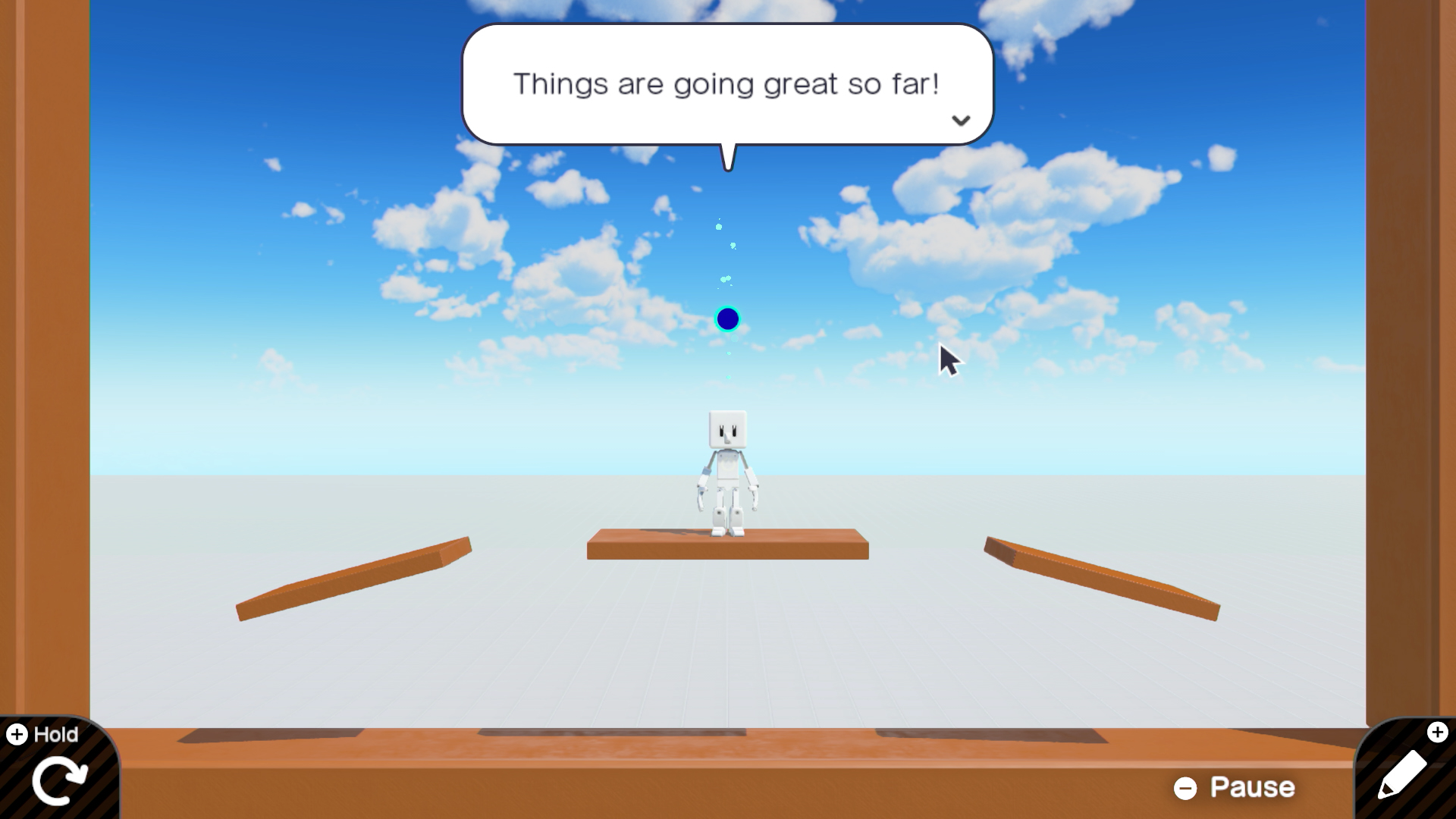 This is just asking for trouble.
This is just asking for trouble.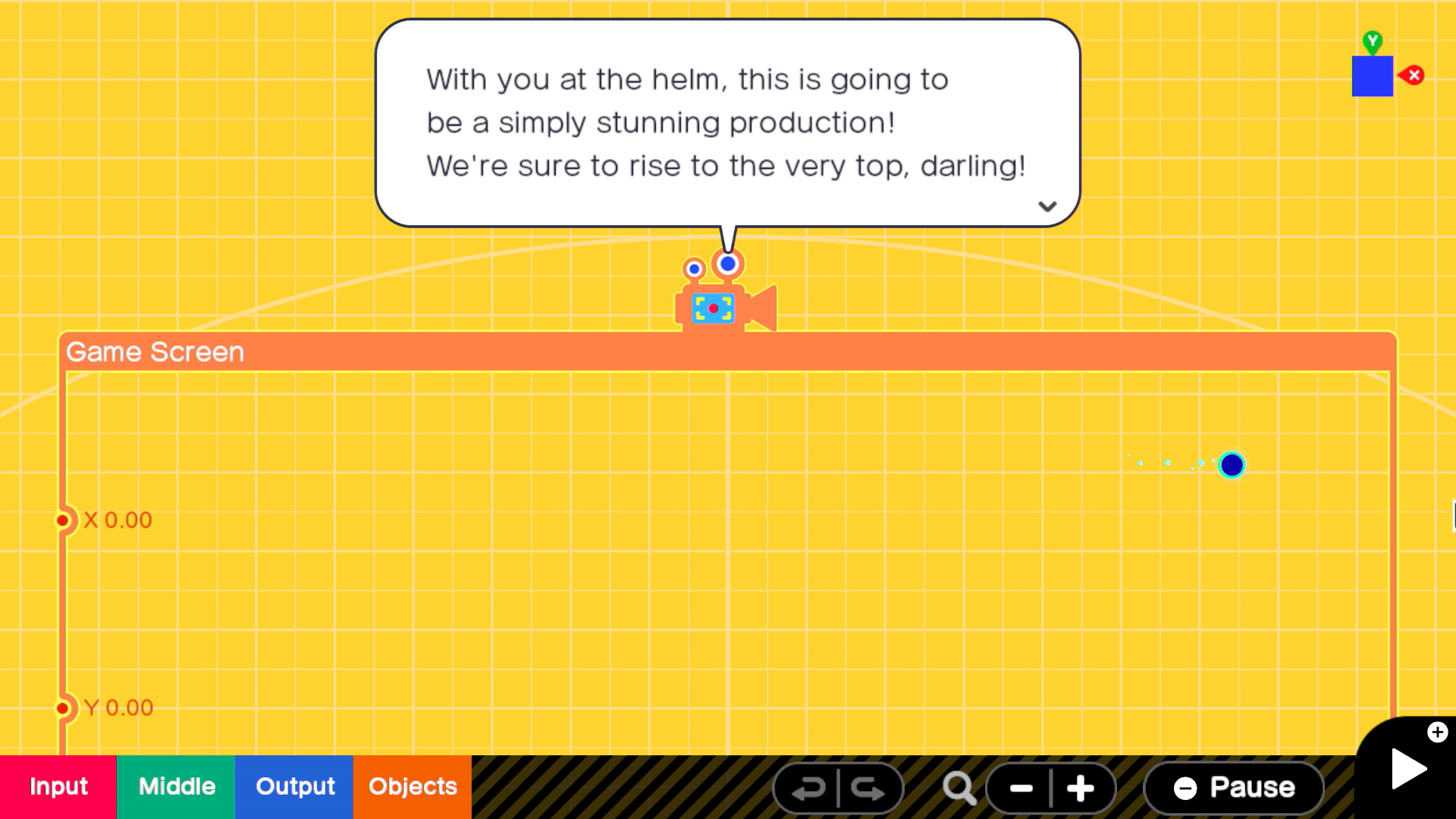 Ugh, these "artistic" cameramen will be the death of me.
Ugh, these "artistic" cameramen will be the death of me.
After those tutorials are done (which should take a few hours), creators get full control, gaining the ability to modify templates or start from scratch to bring completely new concepts to life. Players can also copy and paste Nodons from one program to another, borrowing and tweaking specific elements as they please (Update: Nintendo has clarified that you can only copy and paste Nodons within a specific program. "If you want a specific grouping of Nodon from one program, you’ll have to copy that entire program and use it as the basis of a new one").
Share it yourself
Game Builder Garage's sharing options seem relatively limited. This isn't like Super Mario Maker, where levels are listed in a central repository that any stranger can use to find and play them. Instead, uploaded Game Builder programs produce a shareable code that others can use to download your creation (you can also share programs through a local wireless connection).
Nintendo maintains control over this interpersonal sharing, but its moderation system will largely rely on user policing. "If something is offensive, you can report it," a Nintendo representative told Ars.
A system that relies on user reports probably saves Nintendo a lot of headaches. Looking through every single Game Builder Garage submission for naughty content as it's submitted would take a lot of work, especially considering how deeply that content could be hidden in an array of opaque, hard-to-follow Nodon connections. The situation wouldn't be quite as bad as what a company like Apple faces with its iOS App Store review process, but it might be similar in many ways.
Without a centralized clearinghouse of Game Builder programs, Nintendo also avoids the possibility of young players finding unapproved content within the game itself. Sure, a kid might still come across a program-linking code on Facebook and load it up to see something offensive. But in that case, Nintendo didn't directly facilitate the discovery and can shift at least some blame to the kid cruising Facebook for programs shared by strangers.
"We wanted to keep it completely organic this time," our demo rep said, regarding the sharing system Nintendo put in place. He foresees situations like kids sharing their programs with parents, or computer camp students sharing their creations with each other, rather than single creators going viral with an online hit à la Roblox.The hope, the rep said, is that kids become inspired to learn the basics of how games work. After seeing the components that go into even simple in-game objects, our Nintendo rep said he would “never make fun of a moving platform ever again... I get why it's difficult and challenging and fun and gratifying. I have this to thank for giving me an increased appreciation for what I’m playing."
"If this can inspire at least one person to appreciate a video game, it's done its job."
"interface" - Google News
May 29, 2021 at 01:03AM
https://ift.tt/2R1G7gF
Game Builder Garage hides powerful programming tools behind a cute interface - Ars Technica
"interface" - Google News
https://ift.tt/2z6joXy
https://ift.tt/2KUD1V2
Bagikan Berita Ini














0 Response to "Game Builder Garage hides powerful programming tools behind a cute interface - Ars Technica"
Post a Comment